
Explore the Untamed Beauty of Kahurangi National Park
Discover the breathtaking landscapes and rich biodiversity of Kahurangi National Park in New Zealand, a paradise for nature lovers and adventure seekers.
Kahurangi National Park offers a breathtaking experience for tourists with its diverse landscapes, rich wildlife, and countless recreational opportunities. From rugged mountains to lush forests, this national park is a must-visit destination for nature lovers and adventure seekers alike.
A brief summary to Kahurangi National Park
- 7073, NZ
- +6435469339
- Visit website
Local tips
- Plan your visit during the warmer months for the best weather and trail conditions.
- Bring plenty of water and snacks, as some trails can be long and remote.
- Consider staying overnight in one of the park's designated camping areas for a true wilderness experience.
- Pack insect repellent, as some areas may have a high presence of sandflies.
- Check local weather conditions and trail closures before setting out to ensure a safe adventure.
Getting There
-
Car
From Abel Tasman National Park, take State Highway 60 (SH60) heading south towards Takaka. Continue on SH60 for approximately 22 kilometers until you reach the town of Takaka. Once in Takaka, take a left onto Takaka-Collingwood Highway (SH60) and continue for about 18 kilometers. You will come to a junction; follow the signs to Kahurangi National Park. The park entrance is located around 7 kilometers down this road. Ensure you have a map or GPS for easy navigation.
-
Public Transportation
To reach Kahurangi National Park via public transport from Abel Tasman National Park, you will first need to get to Takaka. You can take a bus from Marahau or Kaiteriteri to Takaka; these services operate several times a day. Once in Takaka, you can either take a local taxi or arrange for a shuttle service that can take you to the Kahurangi National Park entrance. Be sure to check the local bus schedules for current times and routes. Additionally, note that you might incur costs for the bus fare and the taxi/shuttle services.
-
Bike
For those who are more adventurous, biking to Kahurangi National Park is another option. From Abel Tasman National Park, cycle along the Takaka-Collingwood Highway (SH60). The ride is approximately 30 kilometers and involves some hilly terrain, so be prepared for a workout. Make sure to wear a helmet and follow road safety rules. Pack enough water and snacks for the journey.
-
Hiking
If you are up for a challenge, consider hiking from Abel Tasman National Park to Kahurangi National Park. This will require significant planning and preparation, as the distance is considerable (around 40 kilometers) and will take multiple days. Make sure to have a detailed map, camping gear, and sufficient supplies. This is recommended only for experienced hikers.
Discover more about Kahurangi National Park
Iconic landmarks you can’t miss
Oparara Basin Arches
29.5 km
Explore the breathtaking Oparara Basin Arches, a stunning natural attraction in Kahurangi National Park, showcasing limestone formations and lush wildlife.
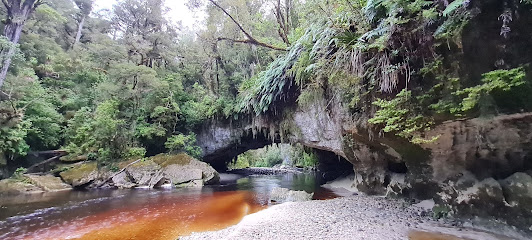
Anatoki Salmon fishing & cafe
30.9 km
Experience the joy of catching fresh salmon and savoring delicious meals at Anatoki Salmon fishing & cafe in Tākaka, a unique tourist attraction.

Salisbury Falls
32.9 km
Experience the breathtaking beauty of Salisbury Falls, a serene escape into nature's wonderland in New Zealand's Nelson-Tasman region.

Abel Tasman Charters
40.9 km
Discover the stunning coastal beauty and wildlife of Abel Tasman National Park with unforgettable boat tours from Abel Tasman Charters.

Abel Tasman Tourism Information
41.1 km
Explore the breathtaking beauty of Abel Tasman National Park, where stunning beaches, lush forests, and outdoor adventures await every traveler.

Abel Tasman Centre
41.1 km
Explore the Abel Tasman National Park with expert guidance and resources at the Abel Tasman Centre in Mārahau, your starting point for adventure.

Motueka Saltwater Baths
41.1 km
Discover the rejuvenating experience of Motueka Saltwater Baths, a serene public swimming pool surrounded by stunning landscapes in New Zealand.

Waka Abel Tasman
41.2 km
Explore the natural beauty and adventure that Waka Abel Tasman offers, from kayaking to breathtaking scenic walks amidst stunning landscapes.

Tinline Bay
42.9 km
Experience the tranquil beauty of Tinline Bay, a hidden gem in New Zealand's Tasman region perfect for relaxation, water activities, and nature exploration.

Abel Tasman Coast Track
46.3 km
Discover the breathtaking Abel Tasman Coast Track, a premier hiking destination in New Zealand, offering stunning scenery and unforgettable outdoor adventures.
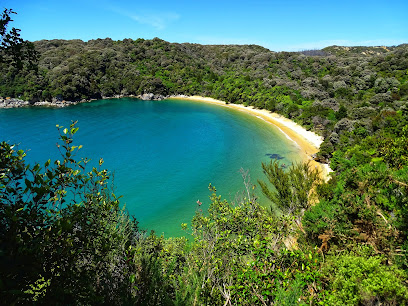
Anchorage Hut
46.5 km
Discover Anchorage Hut in Abel Tasman National Park - a serene camping retreat surrounded by stunning landscapes and endless outdoor adventures.

Falls River Swing Bridge
47.1 km
Experience the thrill of adventure at the Falls River Swing Bridge, a breathtaking highlight of Abel Tasman National Park's scenic trails.
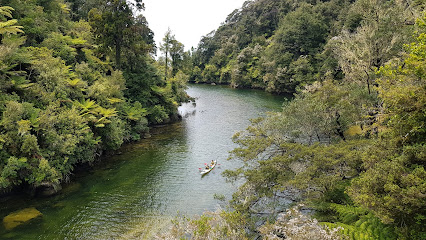
Bark Bay Hut
47.6 km
Discover tranquility and natural beauty at Bark Bay Hut in Abel Tasman National Park, New Zealand's coastal paradise for camping enthusiasts.

Medlands Beach
47.9 km
Discover the serene beauty of Medlands Beach, a peaceful retreat within Abel Tasman National Park, perfect for relaxation and exploration.

Awaroa Hut
48.1 km
Experience the serenity of Awaroa Hut in Abel Tasman National Park - a perfect blend of nature and adventure awaits.

Unmissable attractions to see
Takaka Hill Walkway
28.7 km
Explore the breathtaking Takaka Hill Walkway, where natural beauty meets historical significance in New Zealand's captivating landscape.
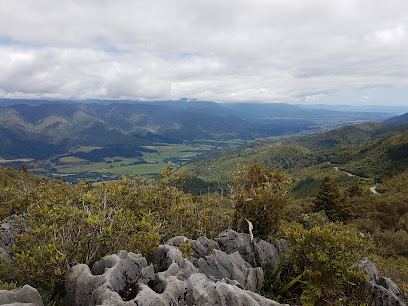
Riuwaka Resurgence
31.5 km
Explore the breathtaking Riuwaka Resurgence, a natural oasis in New Zealand's Riwaka Valley, where crystal-clear waters meet lush greenery.
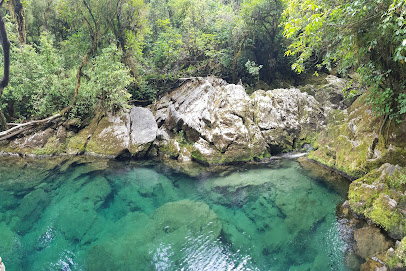
Pupu Hydro Walkway Trailhead
31.9 km
Discover the breathtaking Pupu Hydro Walkway Trailhead in Kahurangi National Park, a haven for hikers and nature lovers in New Zealand.
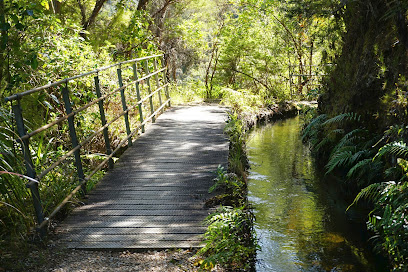
Ngarua Caves
32.1 km
Explore the stunning Ngarua Caves in Motueka, New Zealand, where nature's artistry creates a mesmerizing underground experience.
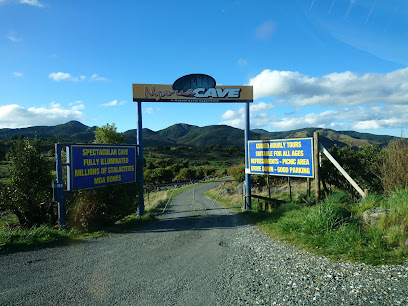
Hawkes Lookout Parking
32.3 km
Experience breathtaking views of Riwaka Valley and Tasman Bay at Hawkes Lookout, a must-see scenic spot along the Takaka Hill Highway.

Hawkes Lookout Walk
32.4 km
Discover the stunning beauty of New Zealand's Takaka Hill with breathtaking views from Hawkes Lookout Walk, a scenic trail for all adventure seekers.
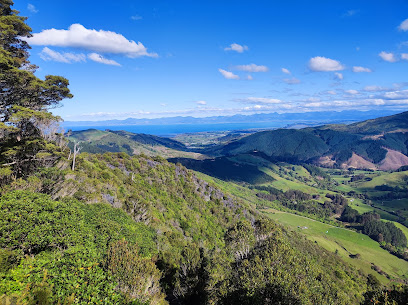
Harwoods Hole
32.6 km
Experience the breathtaking beauty of Harwoods Hole, a stunning hiking attraction in New Zealand's Tasman region, perfect for nature lovers and adventure seekers.

Paines Ford
33.2 km
Discover Paines Ford, a rock climbing haven in Tākaka, where adventure meets breathtaking natural beauty in New Zealand's stunning landscapes.
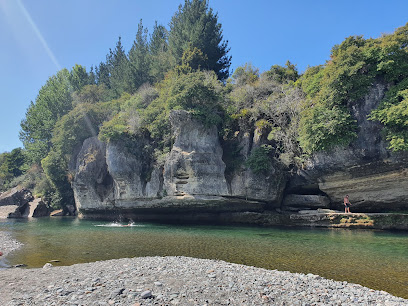
Te Waikoropupu Springs
34.1 km
Explore the crystal-clear waters and serene beauty of Te Waikoropupu Springs, one of New Zealand's most captivating natural attractions.
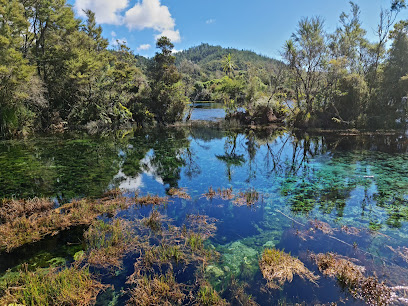
Harwoods Hole Track
34.6 km
Explore the scenic trails of Harwoods Hole Track, an unforgettable hiking experience in New Zealand's stunning Canaan Downs Scenic Reserve.

Golden Bay Visitor Centre
34.8 km
Explore Golden Bay with insights from the Visitor Centre: your guide to breathtaking landscapes, local culture, and unforgettable experiences.
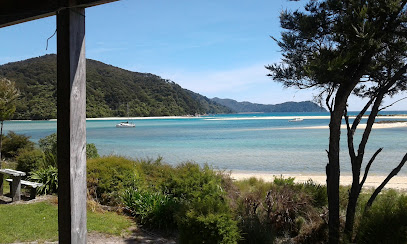
Monza Gallery
35.0 km
Explore Monza Gallery in Tākaka for a captivating journey through contemporary New Zealand art and culture.

The art vault Takaka
35.1 km
Explore unique local art and craftsmanship at The Art Vault in Takaka, a vibrant gallery in the heart of Golden Bay.
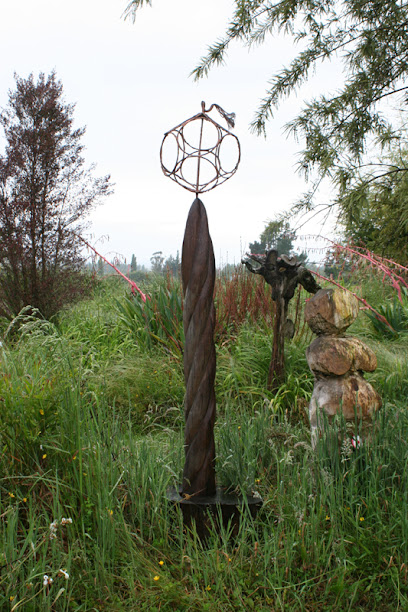
Golden Bay Museum
35.1 km
Discover the historical treasures of Golden Bay at its charming museum, showcasing the region's rich heritage and diverse cultural narratives.
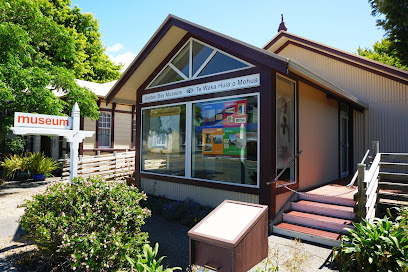
Blue gum swimming hole
36.2 km
Experience the natural beauty of the Blue Gum Swimming Hole, a serene escape along the Motueka River, perfect for swimming and relaxation.
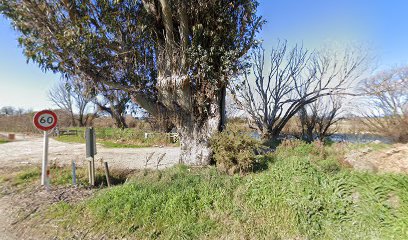
Essential places to dine
River Haven
30.3 km
Experience delightful homemade cuisine at River Haven Café nestled in Motueka Valley's stunning landscape.
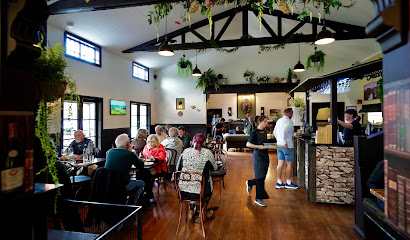
Dada Manifestó
35.2 km
Discover the flavors of New Zealand at Dada Manifestó - Tākaka's premier dining destination offering locally sourced cuisine in a cozy atmosphere.

Mrs Smiths Cafe & Vegetables
38.8 km
Experience the flavors of Riwaka at Mrs Smith's Cafe & Vegetables - where local ingredients meet friendly service in a cozy setting.

Riverside Café (Komitimiti)
39.1 km
Discover Riverside Café in Upper Moutere - where delicious food meets breathtaking views in a cozy atmosphere perfect for relaxation.
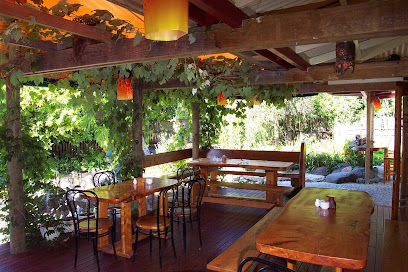
Delicious Eatery
39.9 km
Discover Delicious Eatery in Motueka - where local flavors meet exceptional baking in a cozy atmosphere perfect for any occasion.

Simply Indian
39.9 km
Experience authentic Indian flavors at Simply Indian in Motueka – a culinary delight amidst stunning New Zealand landscapes.

Toad Hall
39.9 km
Experience the best of Motueka at Toad Hall - where delicious food meets vibrant entertainment in a family-friendly atmosphere.
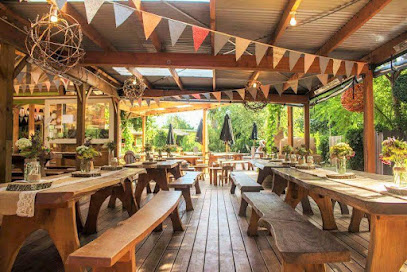
The Smoking Barrel
39.9 km
Experience mouthwatering meals and delicious donuts at The Smoking Barrel in Motueka – A must-visit culinary gem for every traveler.

"The Views" Vegetarian Restaurant
40.0 km
'The Views' Vegetarian Restaurant: A Culinary Oasis Offering Fresh Plant-Based Delights Amidst Breathtaking Natural Beauty in Kaiteriteri.

Abel Tasman Ocean View Chalets
40.6 km
Discover tranquility at Abel Tasman Ocean View Chalets - your perfect getaway with stunning ocean views and access to breathtaking nature trails.

The Fat Tui
40.8 km
Discover gourmet burgers at The Fat Tui in Mārahau – where flavor meets stunning scenery near Abel Tasman National Park.

Abel Tasman Lodge
40.9 km
Discover serenity at Abel Tasman Lodge - your gateway to adventure in New Zealand’s stunning Abel Tasman National Park.

Abel Tasman Haven
40.9 km
Discover serenity at Abel Tasman Haven – your gateway to stunning landscapes and local flavors in beautiful Mārahau.

Beached Whale Restaurant & Bar
40.9 km
Discover the taste of New Zealand at Beached Whale Restaurant & Bar with stunning views and delicious local cuisine.

The Barn Cabins & Camp
40.9 km
Experience nature at its finest at The Barn Cabins & Camp near Abel Tasman National Park - your perfect outdoor getaway.

Markets, malls and hidden boutiques
Stitchcraft and Tanya Carney Designs
31.9 km
Discover the art of sewing at Stitchcraft and Tanya Carney Designs, where vibrant fabrics and expert tailoring await in the scenic Riwaka Valley.

Tiny Lifestyle
34.2 km
Explore the vibrant clothing styles at Tiny Lifestyle in Tākaka, New Zealand, where fashion meets the essence of local culture and creativity.

Living Light Candles Factory Outlet
34.2 km
Explore beautifully crafted candles at Living Light Candles Factory Outlet, Tākaka's charming destination for eco-friendly home decor.

El Gecko
34.9 km
Explore El Gecko in Tākaka for unique local crafts and the perfect Kiwi souvenirs in a welcoming atmosphere.

Wildflower
35.0 km
Experience Tākaka's unique fashion at Wildflower, where local artistry meets stylish clothing in a charming boutique setting.

Bird's
35.0 km
Explore Bird's in Tākaka for a unique clothing shopping experience featuring local designs and eclectic fashion choices.

Mariposa Clothing Takaka
35.0 km
Explore the stylish offerings at Mariposa Clothing in Takaka, where unique fashion meets local charm in a delightful shopping experience.

Dare Darla
35.0 km
Explore unique fashion at Dare Darla, Tākaka's premier clothing store, showcasing local designs and contemporary styles.

Hospice Shop Takaka
35.0 km
Explore Hospice Shop Takaka for unique second-hand finds that support local hospice services in the heart of Tākaka.

Renees Box
35.1 km
Discover creativity at Renee's Box, a vibrant outlet mall in Tākaka offering art, fashion, and local craftsmanship for every tourist.

Amika
35.1 km
Explore unique fashion and accessories at Amika in Tākaka, where local artistry meets sustainable style.

Heavenly Bodies Galaxy Fashions 2001
35.1 km
Discover unique and stylish clothing at Heavenly Bodies Galaxy Fashions in Tākaka, where local fashion meets vibrant culture.

Slam Hound Clothing Co.
35.1 km
Explore Slam Hound Clothing Co. in Tākaka for unique vintage fashion treasures that celebrate sustainability and style.

Twisted Stitches
36.0 km
Discover Twisted Stitches in Tākaka, your go-to destination for exquisite fabrics and sewing supplies amidst stunning natural beauty.

Motupipi Butchery
37.7 km
Savor the best local meats at Motupipi Butchery, where quality and flavor meet in every cut.

Essential bars & hidden hideouts
Roots Bar
34.9 km
Experience Tākaka's vibrant nightlife at Roots Bar, where delicious food meets live music in a welcoming atmosphere.

Sõma
35.0 km
Experience tranquility at Sōma, a wellness center in Tākaka offering rejuvenating massages, a cozy café, and a nurturing atmosphere for relaxation.

Heartfull Bowl
35.0 km
Discover the essence of Tākaka with organic dishes at Heartfull Bowl, where fresh ingredients meet delightful flavors in a cozy atmosphere.

River Inn
37.0 km
Experience the perfect blend of comfort and community at River Inn, your gateway to the stunning landscapes of Tākaka, New Zealand.

Riwaka Hotel
38.3 km
Experience local flavors and craft brews at Riwaka Hotel, a charming bar and restaurant nestled in the scenic beauty of New Zealand's Riwaka region.

Sprig + Fern Motueka
40.0 km
Discover the lively atmosphere and local craft beers at Sprig + Fern Motueka, your perfect stop for a memorable night out.

Mussel Inn
40.3 km
Experience the best of New Zealand seafood and local brews at Mussel Inn, a cozy bar in Onekaka famous for its fresh mussels and welcoming atmosphere.

Al Forno Pizza
41.5 km
Discover the authentic taste of New Zealand at Al Forno Pizza, where every slice is a celebration of fresh ingredients and heartfelt cooking.

Molly B’s
41.5 km
Discover the vibrant atmosphere and breathtaking views at Molly B’s, your perfect coastal bar getaway in Pōhara.

Nikau Cafe & Bar
41.7 km
Discover the flavors of Pōhara at Nikau Cafe & Bar, where local charm meets delicious cuisine in a stunning coastal setting.

Awaroa Cafe / pizza
49.8 km
Discover the exquisite Awaroa Cafe, a perfect blend of delicious pizza and stunning views in the heart of Awaroa Bay.

Sprig + Fern Mapua
49.9 km
Experience the best of local brews and hearty meals at Sprig + Fern Mapua, a charming pub in the heart of New Zealand's beautiful Māpua.

Appleby Garden Bar and Kitchen
58.6 km
Experience exceptional dining at Appleby Garden Bar and Kitchen, where fresh, local flavors meet a serene garden setting in the heart of Nelson.
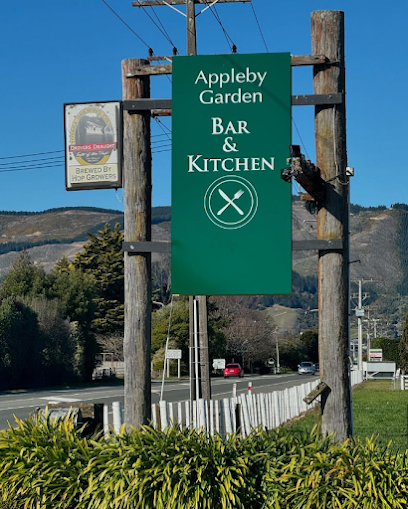
Sprig + Fern The Meadows
58.9 km
Experience the vibrant atmosphere and local flavors at Sprig + Fern The Meadows, a premier bar in Richmond, New Zealand, perfect for relaxation and enjoyment.

The Honest Lawyer Country Pub, Hotel & Venue Hire
61.7 km
Discover the charm of The Honest Lawyer Country Pub in Monaco, Nelson - a perfect blend of dining, accommodation, and event venue.




